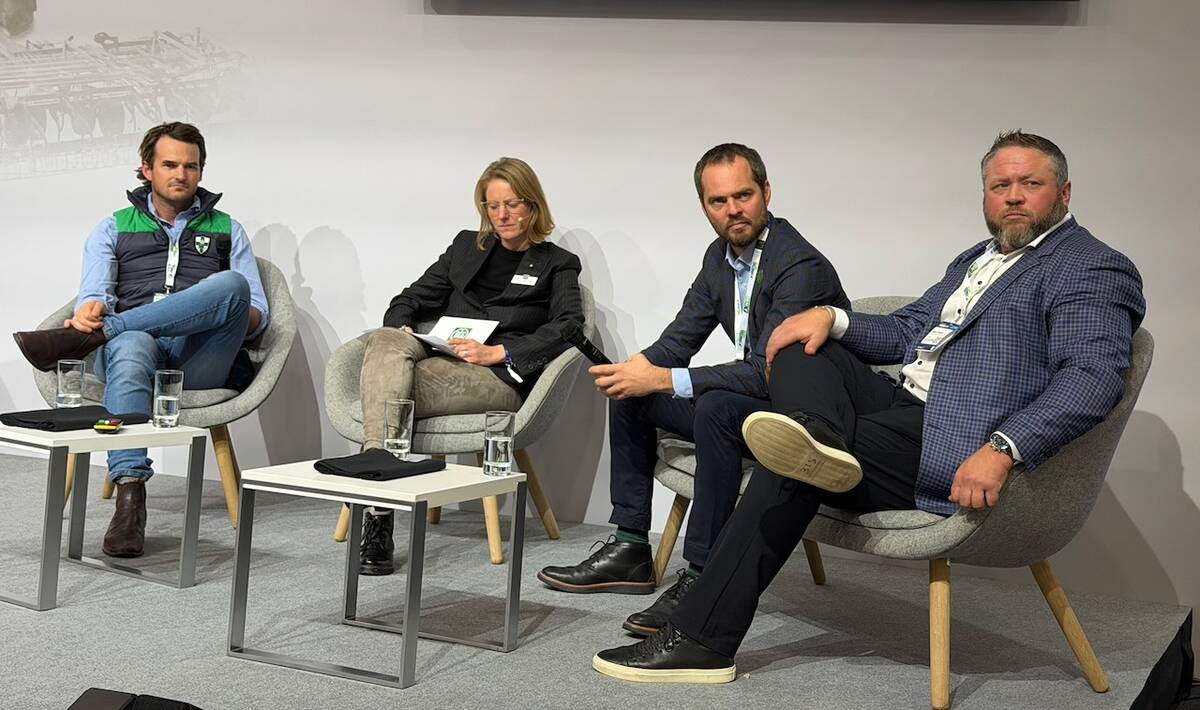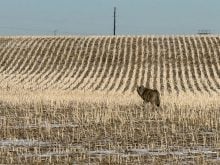FOX VALLEY, Sask. – Lester and Laura Lodoen are converts to the concept for building a better beef industry based on better beef, not better breeds.
They prefer to judge their herd based on producing tender, lean meat with low slaughter waste. And they think the system they use meets those needs.
Supergene is a livestock evaluation system based on more than two decades of herd trials and research done in Australia.
In Canada, just 10 ranches have chosen Supergene, but the Lodoens hope more will soon join.
Read Also

Agritechnica Day 2: The future of tractor power, building quicker crop apps and large farms and tech
Agritechnica Day 2: The future of tractor power, building quicker crop apps with Syngenta and large farms and tech
“I don’t care if they all chose the Supergene system or not, but as cattle producers we all have to realize that what the consumer wants the consumer will pay for.”
The Canadian Cattlemen’s Association says it recognizes the need to measure meat yield, tenderness, color, marbling and other qualities consumers demand. It’s working on a system it regards as the latest in technology for making these measurements based on carcass evaluation at the time of slaughter.
“We will have several two-camera systems up and running in packing plants by the end of the year, along with a connective tissue probe system for tenderness evaluation. The long-term goal is to track those animals producing the premium meat and decide how to improve all Canadian herds through genetics,” said Dennis Laycraft, association executive vice-president.
Laycraft said consumer market pressure will create the need for evaluation and herd improvement. He wouldn’t comment on specific systems other than the project the CCA is carrying out with the Agriculture Canada research station at Lacombe, Alta. and at the University of Guelph, Ont.
Lester said the Supergene system addresses consumer needs.
“If they decide beef isn’t right for them because they can’t get the quality they want or if they don’t know it is available, they will eat other meats. We could in the end lose our domestic market by neglecting the customer in the grocery store,” said Lester.
Buyers at auction rings have long known cattle can vary widely in meat quality. Prices paid for pens of some cattle are slightly higher than others, but the meat packer is often the true winner.
Premium meat prices paid by the restaurant trade and finer grocers are far higher than those seen at the auction ring or farmgate, but even meat buyers can’t be certain of the exact quality they are purchasing.
“Just because you produce better beef (in Canada) doesn’t mean you get paid more for it. In Australia the retail trade has chosen to buy direct from certified herds and they are willing to pay a premium to get those animals. The farmers take home their share of that money,” said Laura.
Eventually, cattle producers will see a premium for higher quality animals, but in the interim they will have to produce better animals for more short-term gains such as better animal health and improved daily gain rates, said Laycraft.
The Lodoens represent Supergene in Canada and Laura is one of the system’s six certified evaluators in the country.
“A good evaluator can decide on the rating of an animal very quickly and at $5 a head it pays for itself just as fast,” said Laura.
Certification requires set criteria for live animals, herd records, tagging and third party evaluation.
Robert Lundquist, of Diamond Seven Ranch and Meats in Maidstone, Sask., has used the Supergene system for 10 years with his polled Hereford herd.
“We have been able to obtain premium prices for our meat. There is more market than we have been able to supply,” he said.
Lundquist credited the system for getting his family through the “volatile cattle market of the past few years.”
The Lodoens converted their herd to the system over five breeding cycles. When their herd was first evaluated, only 20 percent had the genetic make-up linked to the short, fine-fibre meat associated with the best premium animal. Today, 70 percent of the herd meets that standard and they have improved most of the other features in their herd making it completely certified.
“Marbling has always been associated with tenderness, but that really mainly applies to palatability. Tenderness can be combined with marbling through proper breeding and we think this system can provide a way for producers to measure the results,” said Lester.
Slaughter plants can also benefit from certified herds, the Lodoens said. Gentler handling on processing lines, consistent quality, higher than average salable meat ratios and premium marketing can deliver savings and additional profits for processors and wholesalers.
“The only trouble with certified herd systems is getting the industry to recognize that there is a problem and getting farmers to work together to fix it,” said Lester.
He and others using the system in Canada say the push for individual, post-slaughter breed identification for marketing purposes may provide consumer awareness of the different cattle breeds, but can’t guarantee good beef on the table.
“All breeds have good and bad animals and the buyer often can’t tell the difference. No breed ensures quality all of the time, but good breeding will,” said Lundquist.
Don Chalmers, president of the Salers Association of Canada and a Balzac, Alta. cattle producer, said his breed doesn’t have the numbers to be marketed directly to grocery chains or restaurant trade, unlike plans by larger breed groups. He looks forward to evaluation systems that will allow higher quality animals of any breed to demand premium prices.














